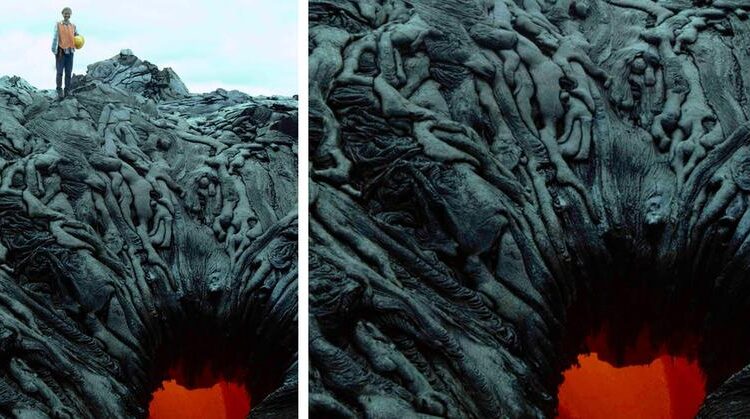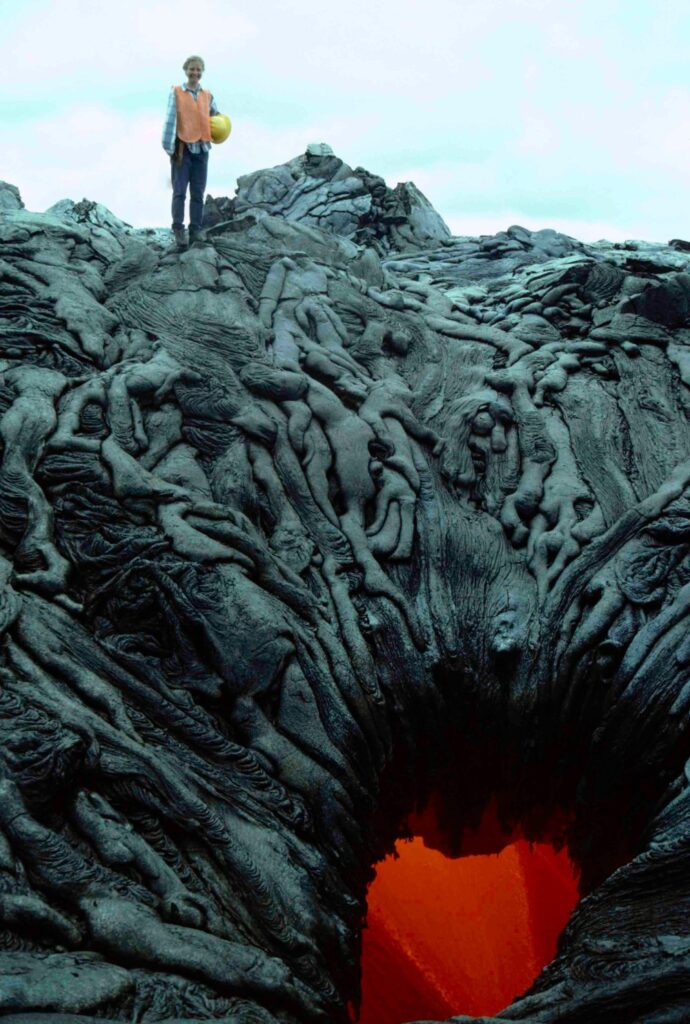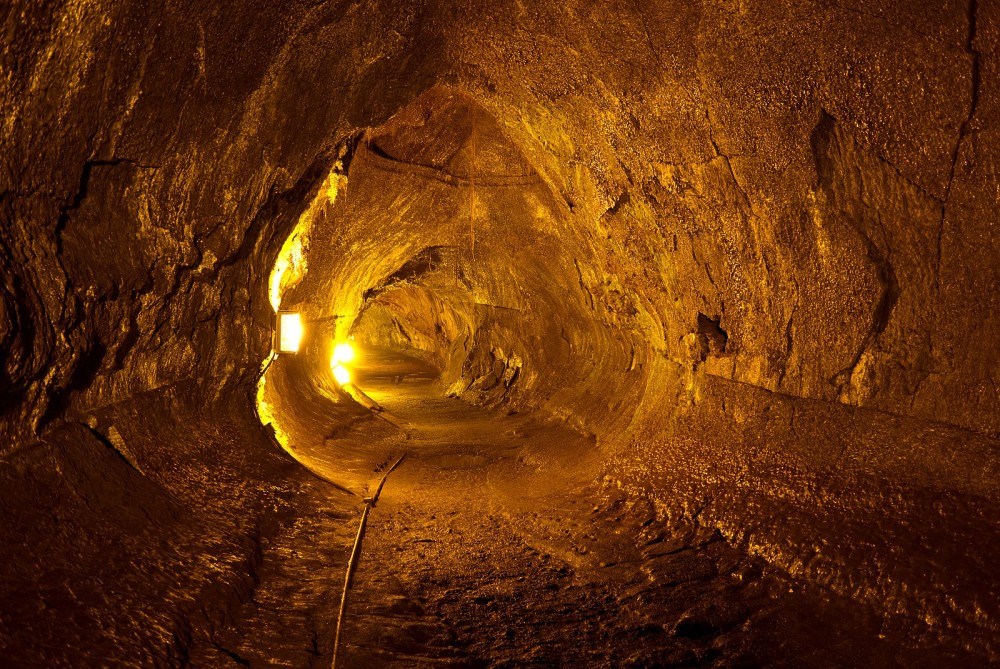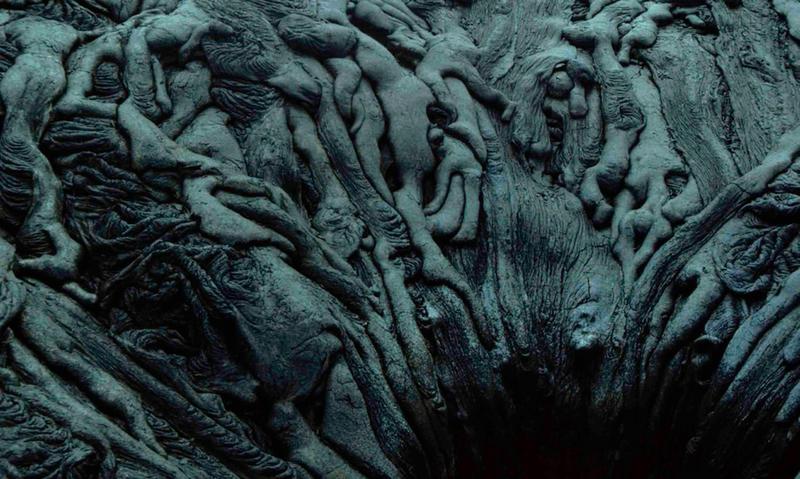
A photo of a lava skylight, taken by volcanologist Laszlo Kestay in Hawaii Volcanoes National Park, has gone viral on social media with the caption “Lava formed to look like a pile of bodies being sucked into hell.” But what is a lava skylight, and how does it form?

Lava skylights are openings in the ceiling of a lava tube that provide a view of the flowing lava. These skylights are usually inaccessible to visitors due to the high risk of roof collapses and hot air emissions. The lava tube is formed by two processes: a lava channel can generate an arc above it that solidifies and cools, or an insulated pahoehoe flow can have molten lava flowing within while the exterior layers freeze.

While lava skylights are typically subterranean, they may collapse in specific areas, forming skylights that offer a glimpse of the flow within. Tubes can completely collapse and become channels, drain out, or become obstructed.

According to Kestay, the skylight in the photo was situated on the coastal flats beneath Pulama Pali, an ideal spot for scientific investigations. The visible pahoehoe lava around the edges of the skylight are the result of a lava flow that traversed across the skylight and caused the lava to tumble back into the tube, giving it the appearance of dead bodies being sucked into the abyss.

Kestay explained that while the phenomenon might resemble a doorway to hell, it should not be seen as particularly scary since it’s just an opening in the ceiling above a lava tube. Although having an active surface flow cross over an active skylight is a bit of a rare coincidence, Kestay says it was definitely worth taking a photo, even back in the days of film cameras where photographers had a limited number of shots.

So while the photo might look like lava-formed bodies being sucked into hell, it’s just a natural phenomenon resulting from the flow of lava in a tube and the formation of a skylight.

Leave a Reply